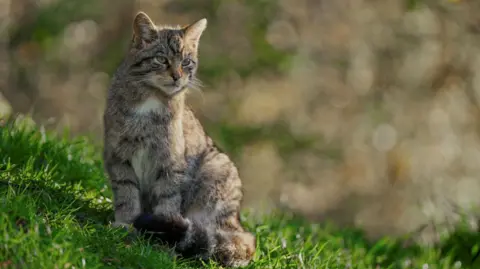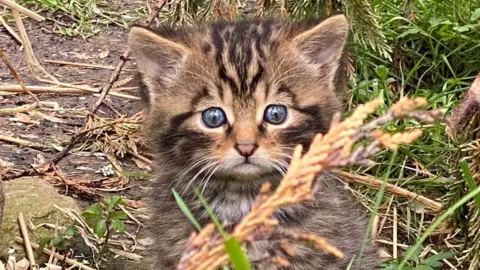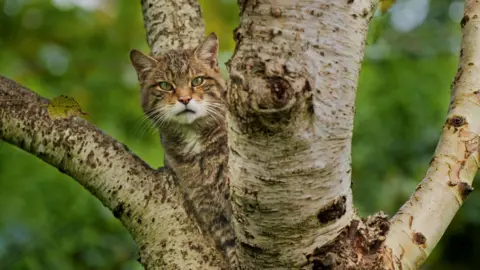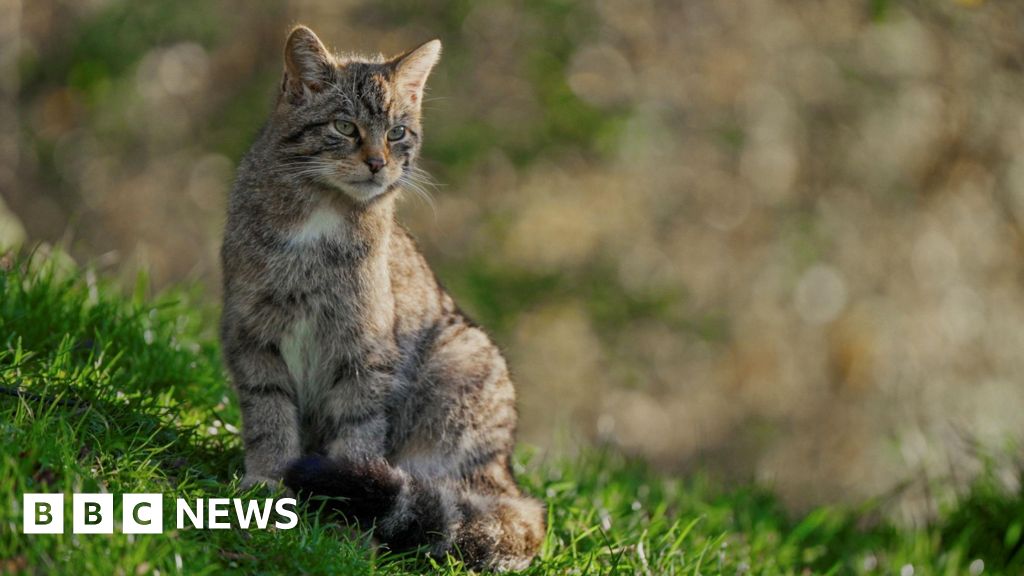 Scotland’s The Big Picture
Scotland’s The Big Picture
Saving Wildcats has released 46 captive-bred cats over the last three years
A conservation project says it will have to find new ways to help fund the captive breeding of Scottish wildcats for release into the wild due to the effects of Brexit.
Saving Wildcats has released 46 cats into the Cairngorms National Park over the last three years, and some of the females have gone on to produce litters of kittens.
Saving Wildcats said it needed additional funding to keep the project going because it could no longer access European Union (EU) support it had previously relied on.
Scottish wildcats were described as “functionally extinct” in the wild in a major study published in 2018.
Saving Wildcats is a partnership led by the Royal Zoological Society of Scotland (RZSS).
The cats are raised at the Conservation Breeding for Release Centre, which is based in a private area of RZSS’s Highland Wildlife Park near Aviemore.
The centre has facilities for breeding, veterinary care and monitoring cats fitted with GPS collars to track their movements in the wild.
Dr Helen Senn, who heads up the project, said: “Just a few years ago, the species was teetering on the edge of extinction in Scotland.
“Now we’re watching them not only survive but start to raise their own kittens in the wild. That gives us real hope for the future.”
But she said more cats had to be bred and released to give the species a “fighting chance” of survival in the wild.
Saving Wildcats said it had received significant support from the EU Life Programme, but it was no longer eligible for the funding after the UK left the union five years ago.
Dr Senn said: “It takes huge amounts of time, expertise and resources to bring a species back from the brink and we can’t do it alone.”
How are Scottish wildcats being saved?
 Saving Wildcats
Saving Wildcats Scotland’s The Big Picture
Scotland’s The Big Picture
Saving Wildcats is breeding and releasing Scottish wildcats because the animals are on the brink of extinction in the wild.
Wildcats favour the woodland habitats found in the Cairngorms National Park.
The Scottish wildcat is the only native member of the cat family still found in the wild in Britain – but today only found in small numbers in parts of Scotland, according to NatureScot.
Lynx also once roamed free in Britain before being hunted to extinction.
Wildcats were persecuted for centuries, but other threats have included habitat loss, disease and breeding with domestic cats, a process called hybridisation.
Saving Wildcats said research suggested that the levels of wildcat DNA found in wildcats in captivity in the UK was “considerably higher” than those found in wild-living cat populations in Scotland.
It added that most of the wildcats in its programme scored higher than the minimum genetic threshold used for breeding the animals in captivity.
The Cairngorms is the UK’s biggest national park and has large areas of woodland habitats favoured by the cats.

